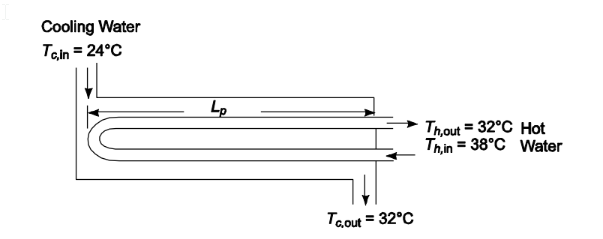The particles of interplanetary dust are called ______________
a. micrometeoroids
b. asteroids
c. meteors
d. meteorites
a
You might also like to view...
The Oort Cloud is thought to be
A) the cloud of gas and dust from which our solar system formed. B) a cloud of debris that occasionally encounters the Earth, causing a meteor shower. C) the spherical cloud of comets and some larger icy bodies surrounding the outer solar system. D) a cloud of asteroids moving between the orbits of Mars and Jupiter. E) the material in the ecliptic plane that creates the zodiacal light.
There is evidence that a collision between a spiral and an elliptical galaxy has produced a radio galaxy
Indicate whether the statement is true or false
The gauge pressure of the water in a swimming pool at 10 ft is __________ the gauge pressure of the water at 5 ft
Fill in the blank(s) with correct word
A shell-and-tube heat exchanger is to be used to cool 25.2 kg/s of water from 38°C to 32°C. The exchanger has one shell-side pass and two tube side passes. The hot water flows through the tubes and the cooling water flows through the shell. The cooling water enters at 24°C and leaves at 32°C. The shell-side (outside) heat transfer coefficient is estimated to be 5678W/(m 2 K). Design specifications require that the pressure drop through the tubes be as close to 13.8 kPa as possible and that the tubes be 18 BWG copper tubing (1.24 mm wall thickness), and each pass is 4.9 m long. Assume that the pressure losses at the inlet and outlet are equal to one and one half of a velocity heat (?V2/gc), respectively. For these specifications, what tube diameter and how many tubes are needed?
GIVEN
A water-to-water shell-and-tube exchanger, hot water in tubes, cooling water in shell One shell and two tube passes Hot water flow rate m
h= 25.2 kg/s Water temperatures
? Hot: Th,in = 38°C Th,out = 32°C
? Cold: Tc,in = 24°C Tc,out = 32°C Shell-side transfer coefficient h o= 5678 W/(m2 K) Pressure drop (?p) = 13.8 kPa Tube wall thickness (t) = 1.24 mm = 0.00124 m Tube length per pass (Lp) = 4.9 m
FIND
The tube diameter (Do) and number of tubes (N)
ASSUMPTIONS
Pressure losses at inlet and outlet (?pii) = 1.5 (? V2/gc) Variation of thermal properties with temperature is negligible Fouling resistance is negligible Thermal resistance of the tube walls is negligible
SKETCH

PROPERTIES AND CONSTANTS
for water at 30°C Density (?) = 995.7 kg/m3
Specific heat (cp) = 4176 J/(kg K)
Thermal conductivity (k) = 0.615 W/(m K)
Kinematic viscosity (?) = 0.805 × 10–6 m2/s
Prandtl number (Pr) = 5.4